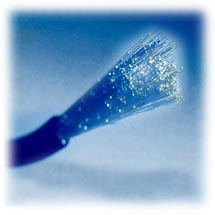Limitations of Copper – Benefits of Fibre
Some of the major limitations of copper based cables are:
Coaxial, and even more so Twisted Pair cable suffers from many problems that don’t occur with the use of fibre.
Coaxial cable is only more efficient that twisted pair because of its ability to increased bulk or size. Low-loss coaxial cables have diameters between 1 and 3 cm and become progressively more costly and unwieldy as the diameter increases.
Fibre, is small and compact and still delivers the quality far superior than overly large coaxial bundles
Copper cables also have to deal with the issues of ‘loss’. The higher the data rate used, the higher the losses; meaning that in practice transmitting data at anything beyond a few hundred Mbits/s is just not feasible.
Fibre’s attenuation rate, in comparison, is virtually flat up to rates of several Gbit/s providing sufficient bandwidth for even the highest data rates as needed in the near future
Copper and electricity don’t go well together. Copper cables are prone to electromagnetic interference such as that created when switching on a piece of electrical equipment, this again can cause high error rates in data links and be very prone to interference.
In contrast, fibre optic cable can be laid next to power distribution cables and suffer no interference at all
Copper cables provide an electrical link between the source and destination of where it is laid, and as can be imagined can cause problems if not dealt with correctly.
Electrical storms can also induce large currents in a copper cable which can cause severe physical damage as well as serious data errors.
Being an insulator, fibre optic cables do not suffer from this problem.
